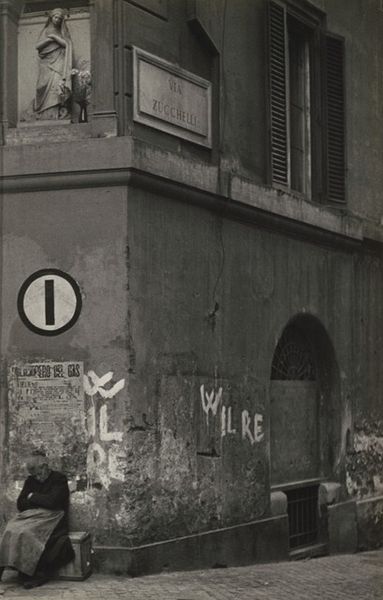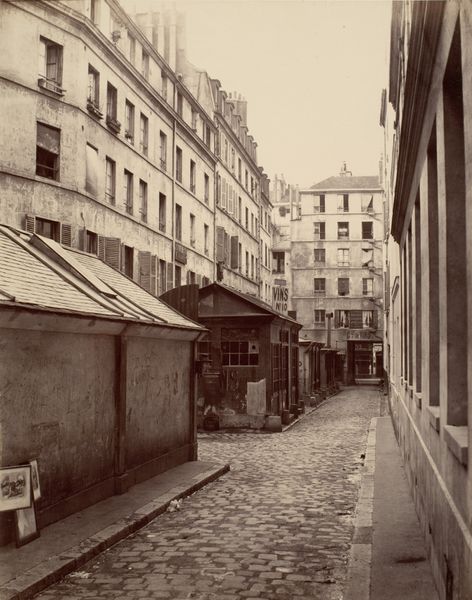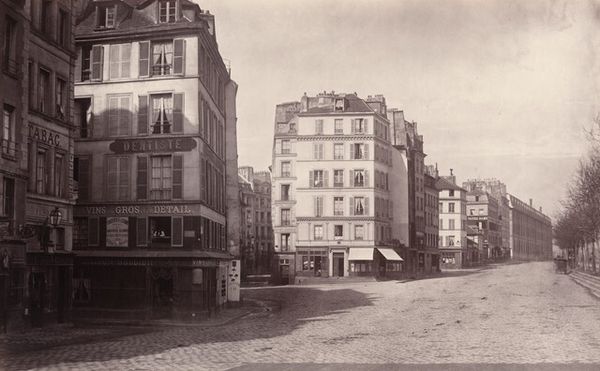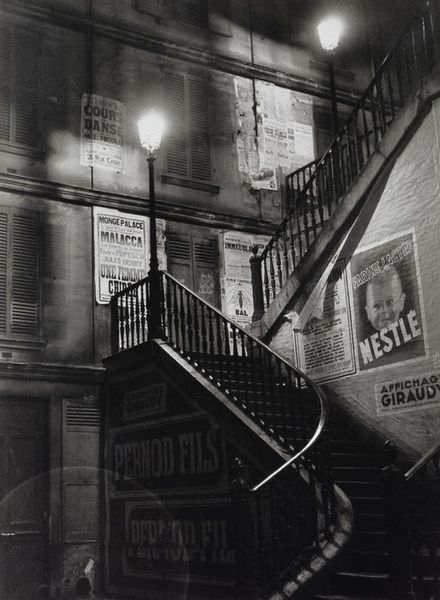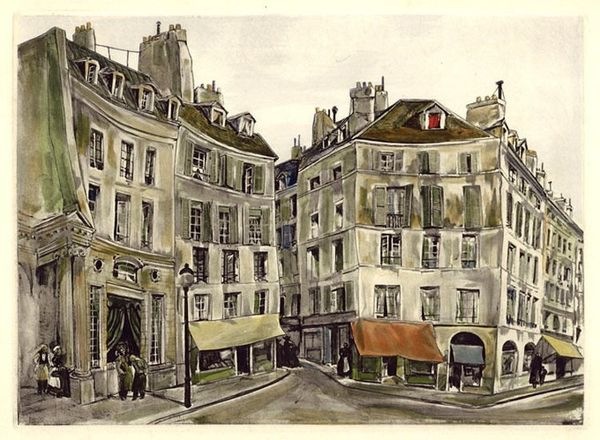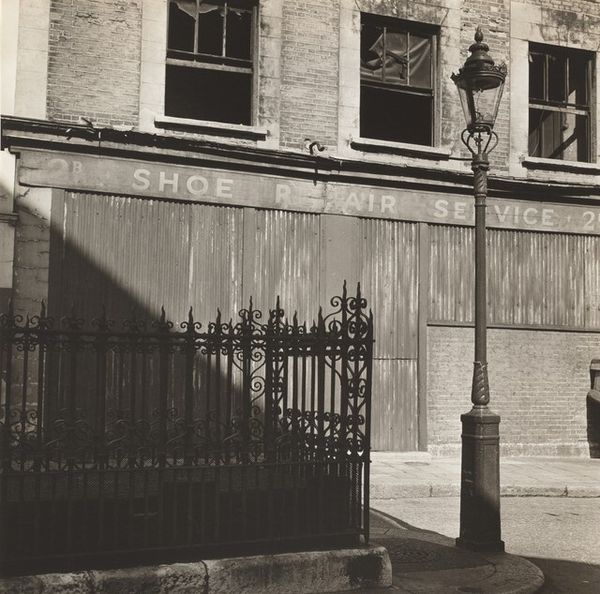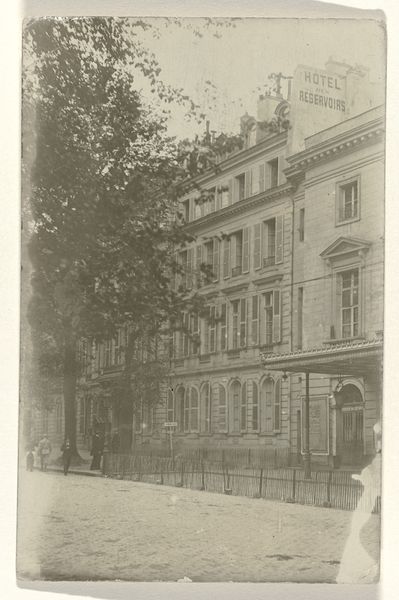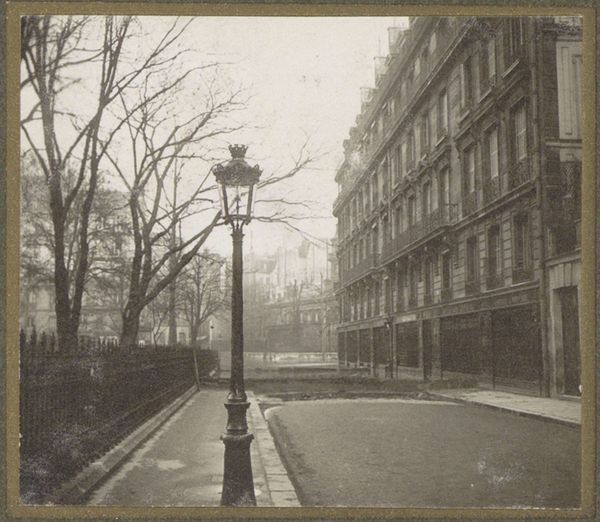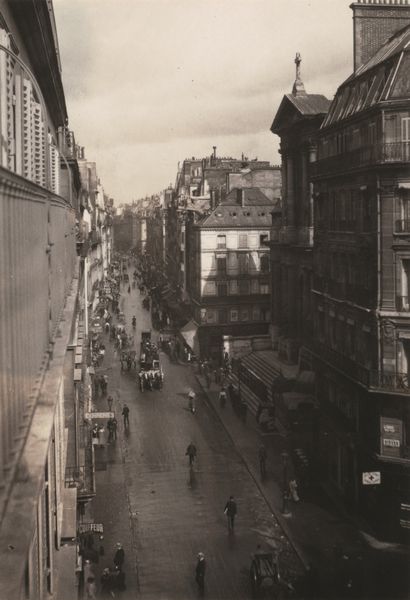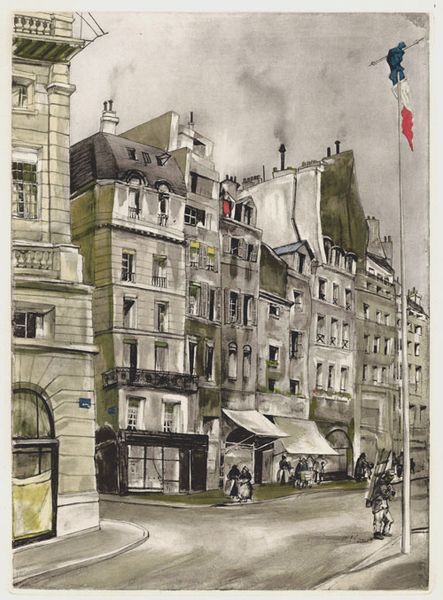
photography
art-deco
black and white photography
black and white format
street-photography
photography
monochrome photography
cityscape
monochrome
realism
building
monochrome
Copyright: Brassai,Fair Use
Curator: This photograph is Brassai's "Façades rue de l’Hôtel de Ville", captured in 1932. The Art Deco influence here really speaks to its time, and I am intrigued by its realism through monochrome photography. Editor: Immediately, I am struck by the almost voyeuristic quality – the windows glowing like eyes peering out from the dark, dense city block. It is evocative. Curator: Absolutely. Considering Brassai’s photographic process at the time, especially his work at night, we need to acknowledge the limitations and resourcefulness involved. The creation of this image— the darkroom practices and equipment of the early 30s—are really part of its story. There is significant skill and labor invested. Editor: The near-absence of human presence is telling too. This work raises so many interesting questions about urban development and planning in interwar Paris: who gets to occupy this space? Is this architecture alienating or embracing? What social narratives do the streets hide and tell? Curator: The very high contrast and heavy blacks give it that isolated feeling you mentioned, though it appears deceptively simple to reproduce at a time when photographic supplies were becoming slightly more industrialized and therefore available to broader society. Editor: Though stark, Brassai's play of light and shadow, specifically here with illumination spilling from each window, carries resonance beyond formalism. These luminous rectangles prompt us to think about the lives within those buildings, the gendered division of labour and who these spaces shelter in contrast to those whom they exclude. Curator: And consider that the building has signage on the ground floor indicating a reserved space for children – the material realities and public services shaping daily life. Even that seemingly small detail suggests much. Editor: Exactly. By examining these subtleties, we consider that a seemingly simple piece becomes a window into social infrastructure and stratification of space. The built environment reflects broader power dynamics. Curator: Brassai’s artistic exploration invites us to delve deeper into these socio-political undertones woven within urban spaces and constructed spaces during a pivotal moment in history. Editor: Precisely. The artwork encourages viewers to probe urban and individual identity and to assess its broader relevance through art’s capacity for political and social action.
Comments
No comments
Be the first to comment and join the conversation on the ultimate creative platform.
